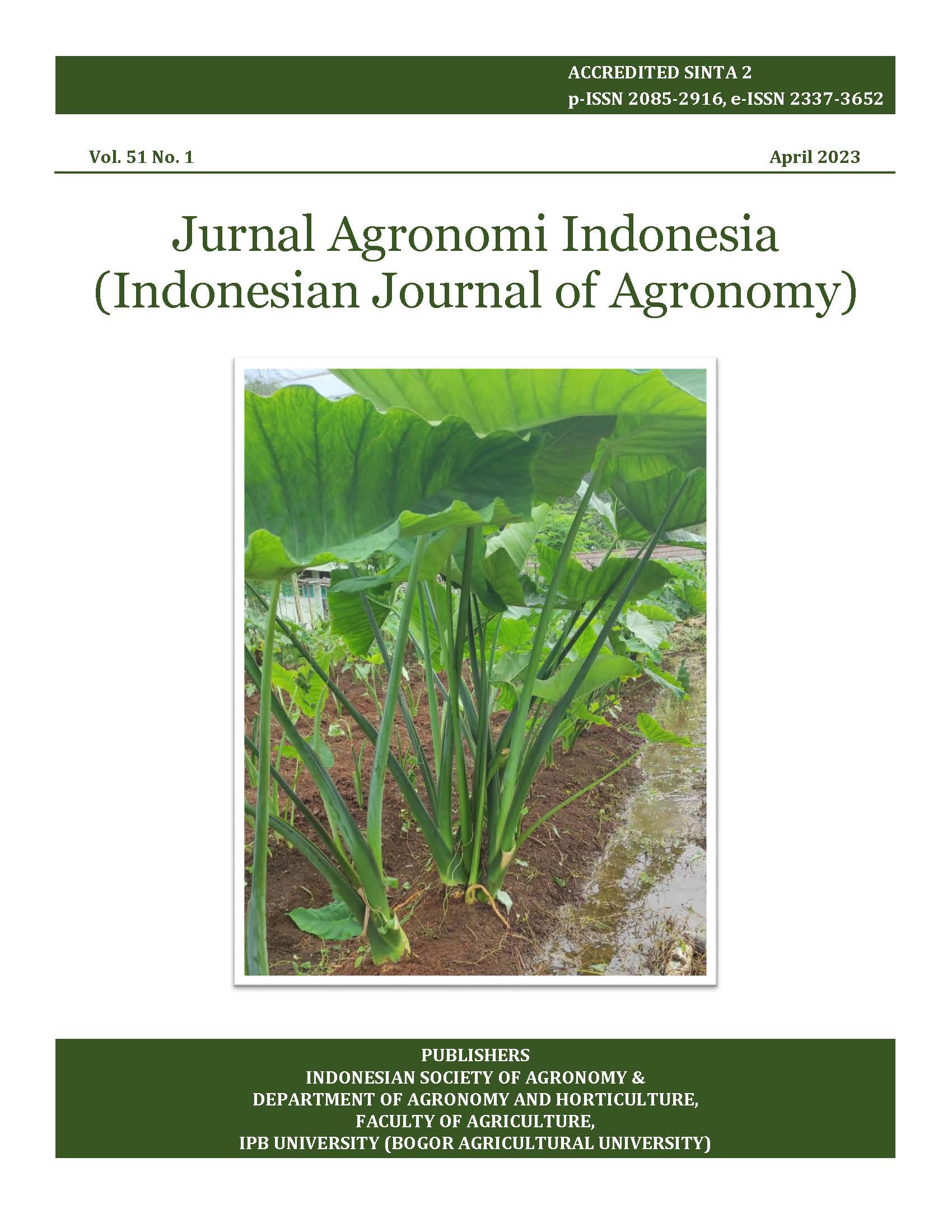Yield component evaluation of mutated sugarcane at first and ratooning plantations
DOI:
https://doi.org/10.24831/ija.v51i1.41860Abstract
Increasing national sugar production can be done by developing new varieties of sugarcane varieties with high potential yields. To ensure profitability and sustainability, however, the new varieties should be accompanied by data on their ratooning ability. This study aimed to evaluate the stability of the yield component of ratooning sugarcane resulting from mutations. The experiment was arranged using a factorial randomized complete block design with the first factor being four genotypes of sugarcane (G) consisting of three mutant genotypes with codes M3.2, M3.3, M3.4 and one original Bululawang genotype (BL). The second factor was ratooning (K) which consisted of three levels, namely first plant (TP), first ratoon (TK1) and second ratoon (TK2). The combination of treatments was repeated 4 times so that 48 unit combinations were obtained. One unit consisted of 28 cane clumps divided into 4 rows. The results showed that the ratooning factor had a significant impact on the value of the proportion of sucrose produced by the mutant sugar cane genotype. The ratooning ability of mutant genotypes to produce sucrose was recorded above 75%. All genotypes of mutant had superior characters compared to non-mutant based on stalk weight and percentage of sucrose.
Keywords: Bululawang, morphology, mutant, ratoon, sugar













